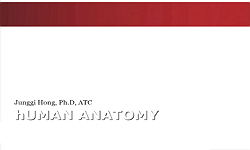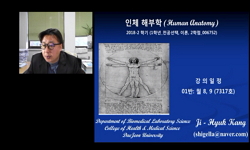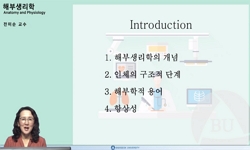Although the pelvic autonomic plexus may be considered a mixture of sympathetic and parasympathetic nerves, little information on its composite fibers is available. Using 10 donated elderly cadavers, we investigated in detail the topohistology of nerv...
http://chineseinput.net/에서 pinyin(병음)방식으로 중국어를 변환할 수 있습니다.
변환된 중국어를 복사하여 사용하시면 됩니다.
- 中文 을 입력하시려면 zhongwen을 입력하시고 space를누르시면됩니다.
- 北京 을 입력하시려면 beijing을 입력하시고 space를 누르시면 됩니다.

Topohistology of sympathetic and parasympathetic nerve fibers in branches of the pelvic plexus: an immunohistochemical study using donated elderly cadavers
한글로보기https://www.riss.kr/link?id=A101828370
-
저자
Nobuyuki Hinata (Department of Urology, Kobe University Graduate School of Medicine) ; Keisuke Hieda (Hiroshima University School of Medicine) ; Hiromasa Sasaki (Division of Gynecology and Obstetrics, Ishikawa Prefectural Central Hospital) ; Gen Murakami (Iwamizawa Kojin-kai Hospital) ; Shinichi Abe (Tokyo Dental College, Japan) ; Akio Matsubara (Hiroshima University) ; Hideaki Miyake (Kobe University Graduate School of Medicine) ; Masato Fujisawa (Kobe University)

- 발행기관
- 학술지명
- 권호사항
-
발행연도
2014
-
작성언어
-
- 주제어
-
KDC
510
-
등재정보
KCI등재,ESCI
-
자료형태
학술저널
-
수록면
55-65(11쪽)
-
KCI 피인용횟수
3
- 제공처
- 소장기관
-
0
상세조회 -
0
다운로드
부가정보
다국어 초록 (Multilingual Abstract)
Although the pelvic autonomic plexus may be considered a mixture of sympathetic and parasympathetic nerves, little information on its composite fibers is available. Using 10 donated elderly cadavers, we investigated in detail the topohistology of nerve fibers in the posterior part of the periprostatic region in males and the infero-anterior part of the paracolpium in females. Neuronal nitric oxide synthase (nNOS) and vasoactive intestinal polypeptide (VIP) were used as parasympathetic nerve markers, and tyrosine hydroxylase (TH) was used as a marker of sympathetic nerves. In the region examined, nNOS-positive nerves (containing nNOS-positive fibers) were consistently predominant numerically. All fibers positive for these markers appeared to be thin, unmyelinated fibers. Accordingly, the pelvic plexus branches were classified into 5 types: triple-positive mixed nerves (nNOS+, VIP+, TH+, thick myelinated fibers + or -); double-positive mixed nerves (nNOS+, VIP-, TH+, thick myelinated fibers + or -); nerves in arterial walls (nNOS-, VIP+, TH+, thick myelinated fibers-); non-parasympathetic nerves (nNOS-, VIP-, TH+, thick myelinated fibers + or -); (although rare) pure sensory nerve candidates (nNOS-, VIP-, TH-, thick myelinated fibers+). Triple-positive nerves were 5-6 times more numerous in the paracolpium than in the periprostatic region. Usually, the parasympathetic nerve fibers did not occupy a specific site in a nerve, and were intermingled with sympathetic fibers. This morphology might be the result of an "incidentally" adopted nerve fiber route, rather than a targetspecific pathway.
목차 (Table of Contents)
- Abstract
- Introduction
- Materials and Methods
- Results
- Discussion
- Abstract
- Introduction
- Materials and Methods
- Results
- Discussion
- References
참고문헌 (Reference)
1 Takenaka A, "Variation in course of cavernous nerve with special reference to details of topographic relationships near prostatic apex: histologic study using male cadavers" 65 : 136-142, 2005
2 Baader B, "Topography of the pelvic autonomic nervous system and its potential impact on surgical intervention in the pelvis" 16 : 119-130, 2003
3 Maas CP, "The inferior hypogastric plexus in gynecologic surgery" 5 : 55-62, 1999
4 Mauroy B, "The female inferior hypogastric (= pelvic) plexus: anatomical and radiological description of the plexus and its afferences: applications to pelvic surgery" 29 : 55-66, 2007
5 Honig MG, "The development of sensory projection patterns in embryonic chick hindlimb under experimental conditions" 118 : 532-548, 1986
6 Jacobson ED, "The Gastointestinal System. Moltility and Circulation" American Physiological Society 1647-1667, 1989
7 Motohashi O, "Subarachnoid haemorrhage induced proliferation of leptomeningeal cells and deposition of extracellular matrices in the arachnoid granulations and subarachnoid space. Immunhistochemical study" 136 : 88-91, 1995
8 Tosney KW, "Specifying the target identity of motoneurons" 17 : 379-382, 1995
9 Hong X, "Role of vasoactive intestinal peptide and pituitary adenylate cyclase activating polypeptide in the vaginal wall of women with stress urinary incontinence and pelvic organ prolapse" 19 : 1151-1157, 2008
10 Ekblad E, "Role of vasoactive intestinal peptide and inflammatory mediators in enteric neuronal plasticity" 16 (16): 123-128, 2004
1 Takenaka A, "Variation in course of cavernous nerve with special reference to details of topographic relationships near prostatic apex: histologic study using male cadavers" 65 : 136-142, 2005
2 Baader B, "Topography of the pelvic autonomic nervous system and its potential impact on surgical intervention in the pelvis" 16 : 119-130, 2003
3 Maas CP, "The inferior hypogastric plexus in gynecologic surgery" 5 : 55-62, 1999
4 Mauroy B, "The female inferior hypogastric (= pelvic) plexus: anatomical and radiological description of the plexus and its afferences: applications to pelvic surgery" 29 : 55-66, 2007
5 Honig MG, "The development of sensory projection patterns in embryonic chick hindlimb under experimental conditions" 118 : 532-548, 1986
6 Jacobson ED, "The Gastointestinal System. Moltility and Circulation" American Physiological Society 1647-1667, 1989
7 Motohashi O, "Subarachnoid haemorrhage induced proliferation of leptomeningeal cells and deposition of extracellular matrices in the arachnoid granulations and subarachnoid space. Immunhistochemical study" 136 : 88-91, 1995
8 Tosney KW, "Specifying the target identity of motoneurons" 17 : 379-382, 1995
9 Hong X, "Role of vasoactive intestinal peptide and pituitary adenylate cyclase activating polypeptide in the vaginal wall of women with stress urinary incontinence and pelvic organ prolapse" 19 : 1151-1157, 2008
10 Ekblad E, "Role of vasoactive intestinal peptide and inflammatory mediators in enteric neuronal plasticity" 16 (16): 123-128, 2004
11 Butler-Manuel SA, "Pelvic nerve plexus trauma at radical and simple hysterectomy: a quantitative study of nerve types in the uterine supporting ligaments" 9 : 47-56, 2002
12 Lance-Jones C, "Pathway selection by embryonic chick motoneurons in an experimentally altered environment" 214 : 19-52, 1981
13 Akita K, "Origins and courses of the nervous branches to the male urethral sphincter" 25 : 387-392, 2003
14 Zhu L, "Neuropeptide Y expression in vaginal epithelium of women with pelvic organ prolapse and stress urinary incontinence" 102 : 65-68, 2008
15 Yucel S, "Neuroanatomy of the human female lower urogenital tract" 172 : 191-195, 2004
16 Hieda K, "Nerves in the intersphincteric space of the human anal canal with special reference to their continuation to the enteric nerve plexus of the rectum" 2013
17 Ferns MJ, "Motor innervation of dorsoventrally reversed wings in chick/quail chimeric embryos" 13 : 2463-2476, 1993
18 Boreham MK, "Morphometric properties of the posterior vaginal wall in women with pelvic organ prolapse" 187 : 1501-1508, 2002
19 Hayashi T, "Loss of heterozygosity on tuberous sclerosis complex genes in multifocal micronodular pneumocyte hyperplasia" 23 : 1251-1260, 2010
20 Moszkowicz D, "Internal anal sphincter parasympathetic-nitrergic and sympathetic-adrenergic innervation: a 3-dimensional morphological and functional analysis" 55 : 473-481, 2012
21 Takenaka A, "Interindividual variation in distribution of extramural ganglion cells in the male pelvis: a semi-quantitative and immunohistochemical study concerning nerve-sparing pelvic surgery" 48 : 46-52, 2005
22 Hoyle CH, "Innervation of vasculature and microvasculature of the human vagina by NOS and neuropeptide-containing nerves" 188 (188): 633-644, 1996
23 Costello AJ, "Immunohistochemical study of the cavernous nerves in the periprostatic region" 107 : 1210-1215, 2011
24 Uckert S, "Immunocytochemical distribution of nitric oxide synthase in the human seminal vesicle: a light and electron microscopical study" 31 : 262-266, 2003
25 Imai K, "Human pelvic extramural ganglion cells: a semiquantitative and immunohistochemical study" 28 : 596-605, 2006
26 Kato M, "Histotopography of the female cavernous nerve: a study using donated fetuses and adult cadavers" 19 : 1687-1695, 2008
27 Kuntz A, "Fiber components of the splanchnic nerves" 128 : 139-146, 1957
28 Maggi CA, "Direct evidence for the involvement of vasoactive intestinal polypeptide in the motor response of the human isolated ileum to capsaicin" 185 : 169-178, 1990
29 Hirata E, "Comparative histological study of levels 1-3 supportive tissues using pelvic floor semiserial sections from elderly nulliparous and multiparous women" 37 : 13-23, 2011
30 Grozdanovic Z, "Colocalisation of NADPH-diaphorase with neuropeptides in the ureterovesical ganglia of humans" 98 : 245-253, 1996
31 Alsaid B, "Coexistence of adrenergic and cholinergic nerves in the inferior hypogastric plexus: anatomical and immunohistochemical study with 3D reconstruction in human male fetus" 214 : 645-654, 2009
32 Hisasue S, "Baseline erectile function alters the cavernous nerve quantity and distribution around the prostate" 184 : 2062-2067, 2010
33 Butler-Manuel SA, "Autonomic nerve trauma at radical hysterectomy: the nerve content and subtypes within the superficial and deep uterosacral ligaments" 15 : 91-96, 2008
34 Ali M, "Anatomy of the pelvic plexus and innervation of the prostate gland" 17 : 123-129, 2004
35 Costello AJ, "Anatomical studies of the neurovascular bundle and cavernosal nerves" 94 : 1071-1076, 2004
36 Kiyoshima K, "Anatomical features of periprostatic tissue and its surroundings: a histological analysis of 79 radical retropubic prostatectomy specimens" 34 : 463-468, 2004
37 Donker PJ, "A study of the myelinated fibres in the branches of the pelvic plexus" 5 : 185-202, 1986
38 Busacchi P, "A histological and immunohistochemical study of neuropeptide containing somatic nerves in the levator ani muscle of women with genitourinary prolapse" 78 : 2-5, 1999
동일학술지(권/호) 다른 논문
-
- 대한해부학회
- Sabrieh Amini
- 2014
- KCI등재,ESCI
-
Fetal development of the minor lung segment
- 대한해부학회
- Shinichi Abe
- 2014
- KCI등재,ESCI
-
Expression and localization of Rdd proteins in Xenopus embryo
- 대한해부학회
- Jong Chan Lim
- 2014
- KCI등재,ESCI
-
- 대한해부학회
- Ji Hyun Kim
- 2014
- KCI등재,ESCI
분석정보
인용정보 인용지수 설명보기
학술지 이력
| 연월일 | 이력구분 | 이력상세 | 등재구분 |
|---|---|---|---|
| 2022 | 평가예정 | 계속평가 신청대상 (계속평가) | |
| 2020-01-01 | 평가 | 등재후보학술지 선정 (신규평가) |  |
| 2019-12-01 | 평가 | 등재후보 탈락 (계속평가) | |
| 2018-12-01 | 평가 | 등재후보로 하락 (계속평가) |  |
| 2015-01-01 | 평가 | 등재학술지 유지 (등재유지) |  |
| 2011-01-01 | 평가 | 등재학술지 유지 (등재유지) |  |
| 2010-02-02 | 학술지명변경 | 한글명 : 대한해부학회지 -> Anatomy and Cell Biology외국어명 : The Korean Journal of Anatomy -> Anatomy and Cell Biology |  |
| 2008-01-01 | 평가 | 등재학술지 선정 (등재후보2차) |  |
| 2007-01-01 | 평가 | 등재후보 1차 PASS (등재후보1차) |  |
| 2006-01-01 | 평가 | 등재후보로 하락 (등재유지) |  |
| 2004-01-01 | 평가 | 등재 1차 FAIL (등재유지) |  |
| 2001-07-01 | 평가 | 등재학술지 선정 (등재후보2차) |  |
| 1999-01-01 | 평가 | 등재후보학술지 선정 (신규평가) |  |
학술지 인용정보
| 기준연도 | WOS-KCI 통합IF(2년) | KCIF(2년) | KCIF(3년) |
|---|---|---|---|
| 2016 | 0.15 | 0.15 | 0.1 |
| KCIF(4년) | KCIF(5년) | 중심성지수(3년) | 즉시성지수 |
| 0.1 | 0.09 | 0.223 | 0.03 |




 스콜라
스콜라







